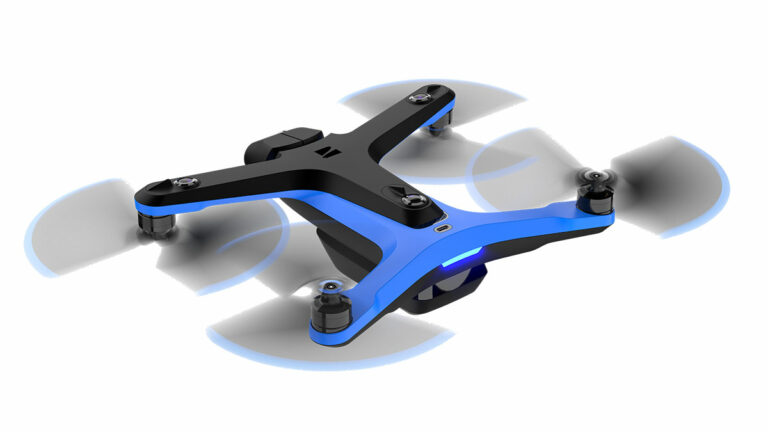Which drones are currently approved by the GSA?
In a previous article, we discussed how the General Service Administration (GSA) was limiting drone options. Through its “Blue sUAS” program, the Department of Defense (DoD) eliminated foreign drone availability.
By removing from their contracts all but five approved drones, the GSA hopes to deter Chinese drone use in federal agencies.
In this article, we’ll review how the Blue sUAS program selected acceptable drones and provide an overview of each model.
How did Blue sUAS select drones?
In order to be certified to fly in DoD and national airspace, and meet the criteria required for U.S. government procurement, the Blue sUAS required drones to have:
- An operational range of at least 3 kilometers
- Flight endurance of at least 30+ minutes
- IP53 rating – meaning that they are sufficiently protected from dust and rain so that the drone can fly through both
- Assembly time of 2 minutes or less
- Take-off weight of less than 3lbs (without a payload)
- The ability to carry stabilized high-resolution day & night sensors
- Architecture built around an open-source protocol
What are the drones that meet these criteria?
– Altavian ION M440
– Parrot ANAFI-USA-Gov/mil
– Skydio X2D
– Teal Golden Eagle
– Vantage Robotics Vesper
These platforms all met Blue sUAS standards.
Here’s a quick overview of each of them:
Altavian ION M440
Altavian’s ION M440 is allegedly designed to be “built for short-range reconnaissance in the tactical, obstacle-rich environment.”
It weighs 3.8 lbs at takeoff, has a 37 minute endurance time, and is designed for collision avoidance and GPS-denied environments.
Additionally, since FLIR recently acquired Altavian, this suggests that the ION M440 will be consistently updated with the latest FLIR technology, possibly giving it a slight reconnaissance data advantage.
Parrot ANAFI-USA-Gov/mil
Although Parrot is a French company, their ANAFI-USA-Gov/mil drones are assembled in Massachusetts.
The drone is said to weigh just 1 lb, have a 32 minute maximum flight time, and operate well in GPS-denied environments.
Parrot claims that the military version of the ANAFI can be operated without storing any data on the platform itself, offering complete operational secrecy.
Not only that, but the drone’s lights can be disabled for stealth missions.
Parrot has emphasized the extensive security features that their platform features, and sUAS news summarizes them nicely. The drone notably features:
- A default of flight data and/or logs being stored only on the user’s device, with the option to store data on secure servers in Europe via Parrot’s FreeFlight 6 app.
- Encryption of all photos and videos stored on the SD card.
- Secure command and control protocol: the drone and ground control station communicates over Wi-Fi signals secured with WPA-2 certification.
- Firmware security – Parrot tries to prevent the installation of malicious code using digital signature verification for all firmware updates
- Data encryption and privacy features that are compliant with the European Union’s General Data Protection Regulation (GDPR).
Skydio X2D
Skydio designed their X2D drone specifically to meet the short-range reconnaissance (SRR) requirements of the US Army.
The drone is said to weigh 1.3kg (2.86 lbs.) and to have the ability to carry custom payloads of up to 150g (0.33 lbs.).
Its flight endurance is 35 minutes.
Skydio highlights the drone’s “ironclad” end-to-end protection, suitable for the collection of sensitive data during missions.
The company also states their drone is equipped with media card encryption, signed and encrypted firmware, and burned-in keys for added security.
Teal Golden Eagle
Teal says that their Golden Eagle drone is primarily designed for short-range intelligence, surveillance, and reconnaissance (ISR) military operations.
However, they add that it has also been adopted by industry for managing wildlife and land, as well as infrastructure and security.
Teal boasts that this drone has a flight endurance of up to 50 minutes, with wind resistance of 30+ miles per hour. They also boast of the ability to operate in extreme temperatures, ranging from -32° to 110° Fahrenheit.
Additionally, the company claims that the Golden Eagle features near-silent propulsion, though no details are provided on what that means in terms of decibels emitted when the drone is operating.
Vantage Robotics Vesper
Vantage Robotics’ Vesper drone is also designed for ISR military operations and is designed with optimal flight endurance in mind.
It weighs between 597 – 697 grams (about 1.32 to 1.53 lbs).
Allegedly, the Vesper can fly up to 50 minutes with its “recon” rotor set, and 32 minutes with its shrouded rotor set.
Its operational temperature range, though not quite as broad as the Golden Eagle’s, is still quite impressive: -20° – 45° Celsius (-4° to 113° Fahrenheit.)
Notably, the Vesper has a rating of IP67, which is significantly above the Blue sUAS’s required IP53 rating.
This means the platform is totally protected not only from dust, but also protected against the effects of temporary immersion into water between 15cm and 1m, for up to 30 minutes.
Mission accomplished?
The Blue sUAS program has provided a great framework for identifying suitable small UAS for US government agencies.
However, seeing the priority US government entities place on avoiding Chinese-manufactured drones, a similar program for large UAS could also prove useful in the near future.
In addition to streamlining government processes, this would incentivize large UAS innovation among drone companies in the US and allied countries.
Innovation for the future of the industry.

Miriam Hinthorn - Contributing Author
Miriam Hinthorn is an experienced management professional who is currently pursuing her master’s in Data, Economics, and Development Policy at MIT while serving as principal consultant at Consult92.
Miriam developed a love for UAS technology when she served as operations manager at Consortiq. Today, having completed over 30 successful projects in 10 countries, she loves solving a wide variety of logistical, technical, and cultural challenges for her clients so that they can focus on what care about most.

